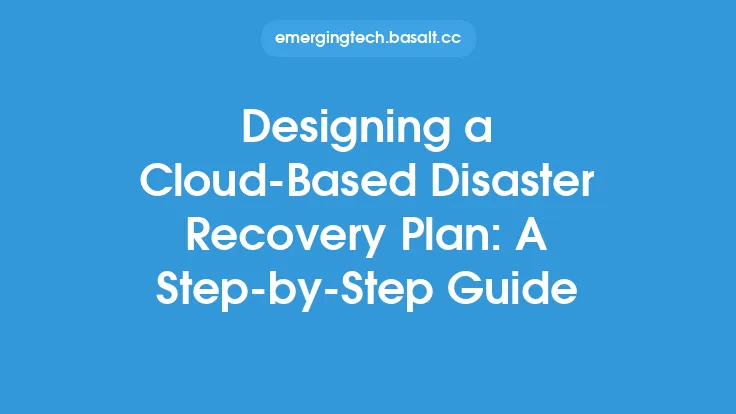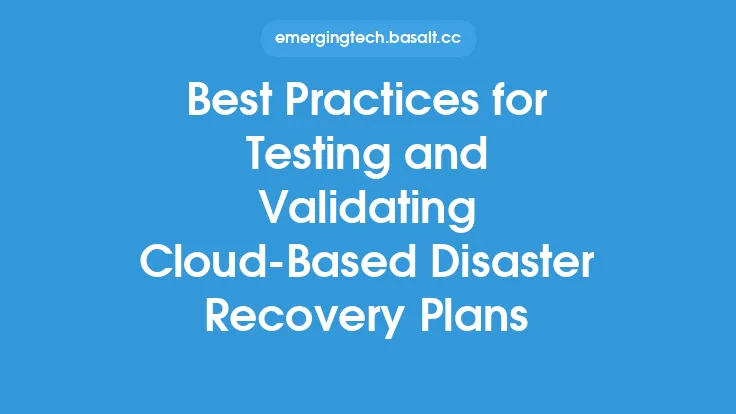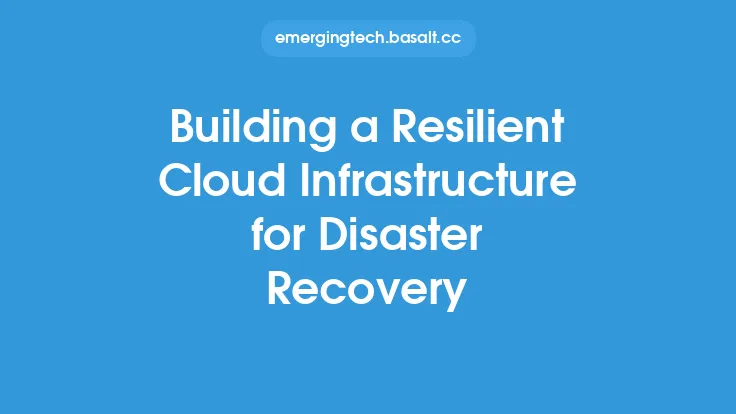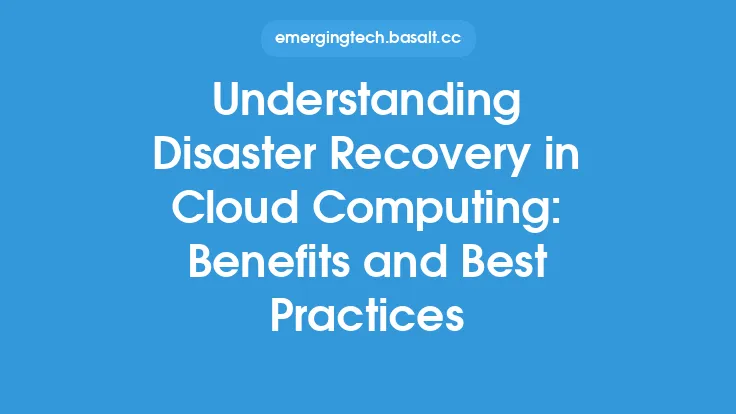In today's digital age, businesses rely heavily on their IT infrastructure to operate efficiently and effectively. However, with the increasing complexity of modern IT systems, the risk of downtime and data loss due to disasters, cyber-attacks, or technical failures has become a major concern. To mitigate this risk, organizations are turning to cloud-based disaster recovery solutions to ensure maximum uptime and minimize the impact of disruptions. Cloud-based disaster recovery solutions provide a robust and scalable way to recover IT systems and data in the event of a disaster, enabling businesses to quickly restore operations and maintain customer satisfaction.
Introduction to Cloud-Based Disaster Recovery
Cloud-based disaster recovery solutions leverage the scalability, flexibility, and cost-effectiveness of cloud computing to provide a reliable and efficient way to recover IT systems and data. These solutions typically involve replicating data and applications to a cloud-based environment, where they can be quickly recovered in the event of a disaster. Cloud-based disaster recovery solutions can be categorized into two main types: self-managed and managed. Self-managed solutions require organizations to manage and maintain their own disaster recovery infrastructure, while managed solutions provide a fully managed service, where the cloud provider is responsible for managing and maintaining the disaster recovery environment.
Key Components of Cloud-Based Disaster Recovery Solutions
Cloud-based disaster recovery solutions typically consist of several key components, including data replication, virtualization, and automation. Data replication involves duplicating data in real-time to a cloud-based environment, ensuring that data is always up-to-date and available for recovery. Virtualization involves creating virtual machines (VMs) that can be quickly spun up in the cloud to replace failed systems. Automation involves using software tools to automate the disaster recovery process, including failover, failback, and testing. These components work together to provide a comprehensive disaster recovery solution that can quickly recover IT systems and data in the event of a disaster.
Benefits of Cloud-Based Disaster Recovery Solutions
Cloud-based disaster recovery solutions offer several benefits, including reduced costs, increased scalability, and improved reliability. Traditional disaster recovery solutions often require significant upfront investments in hardware and software, as well as ongoing maintenance and support costs. Cloud-based disaster recovery solutions, on the other hand, provide a pay-as-you-go pricing model, where organizations only pay for the resources they use. This can significantly reduce the cost of disaster recovery, making it more accessible to small and medium-sized businesses. Additionally, cloud-based disaster recovery solutions provide increased scalability, enabling organizations to quickly scale up or down to meet changing business needs. Finally, cloud-based disaster recovery solutions provide improved reliability, with built-in redundancy and failover capabilities to ensure maximum uptime.
Technical Considerations for Cloud-Based Disaster Recovery
When implementing a cloud-based disaster recovery solution, there are several technical considerations that must be taken into account. These include network connectivity, data security, and application compatibility. Network connectivity is critical to ensure that data can be quickly replicated to the cloud and recovered in the event of a disaster. Data security is also essential, with organizations needing to ensure that data is encrypted and protected from unauthorized access. Application compatibility is another key consideration, with organizations needing to ensure that applications are compatible with the cloud-based disaster recovery environment. Additionally, organizations must consider the recovery time objective (RTO) and recovery point objective (RPO), which define the maximum amount of time that can be spent recovering from a disaster and the maximum amount of data that can be lost.
Cloud Provider Considerations for Disaster Recovery
When selecting a cloud provider for disaster recovery, there are several factors that must be considered. These include the provider's reputation, scalability, and security. The provider's reputation is critical, with organizations needing to ensure that the provider has a proven track record of delivering reliable and secure disaster recovery solutions. Scalability is also essential, with organizations needing to ensure that the provider can quickly scale up or down to meet changing business needs. Security is another key consideration, with organizations needing to ensure that the provider has robust security controls in place to protect data and applications. Additionally, organizations must consider the provider's compliance with industry regulations, such as HIPAA and PCI-DSS, and their ability to provide customized disaster recovery solutions.
Best Practices for Implementing Cloud-Based Disaster Recovery
To ensure the successful implementation of a cloud-based disaster recovery solution, there are several best practices that must be followed. These include conducting a thorough risk assessment, developing a comprehensive disaster recovery plan, and testing the disaster recovery solution regularly. Conducting a thorough risk assessment is critical to identify potential risks and develop strategies to mitigate them. Developing a comprehensive disaster recovery plan is also essential, with organizations needing to define the scope, goals, and objectives of the disaster recovery solution. Testing the disaster recovery solution regularly is also critical, with organizations needing to ensure that the solution can quickly recover IT systems and data in the event of a disaster. Additionally, organizations must ensure that the disaster recovery solution is aligned with business objectives and that it is continuously monitored and updated to ensure maximum uptime and reliability.
Conclusion
In conclusion, cloud-based disaster recovery solutions provide a robust and scalable way to recover IT systems and data in the event of a disaster, enabling businesses to quickly restore operations and maintain customer satisfaction. By understanding the key components, benefits, and technical considerations of cloud-based disaster recovery solutions, organizations can make informed decisions about implementing a cloud-based disaster recovery solution. Additionally, by following best practices and considering key factors when selecting a cloud provider, organizations can ensure the successful implementation of a cloud-based disaster recovery solution that meets their business needs and ensures maximum uptime and reliability.





